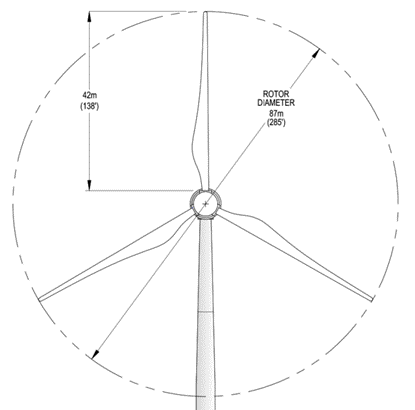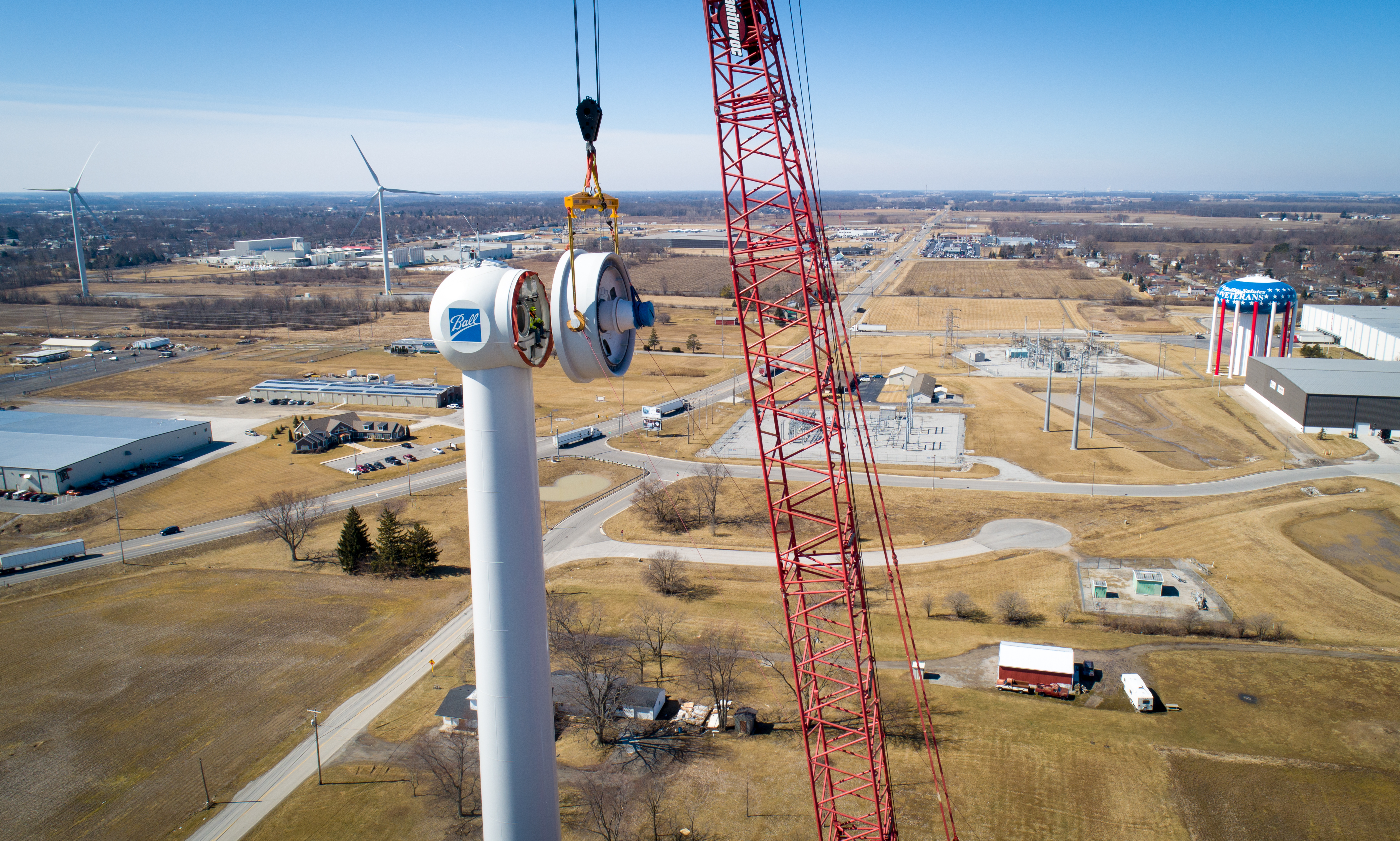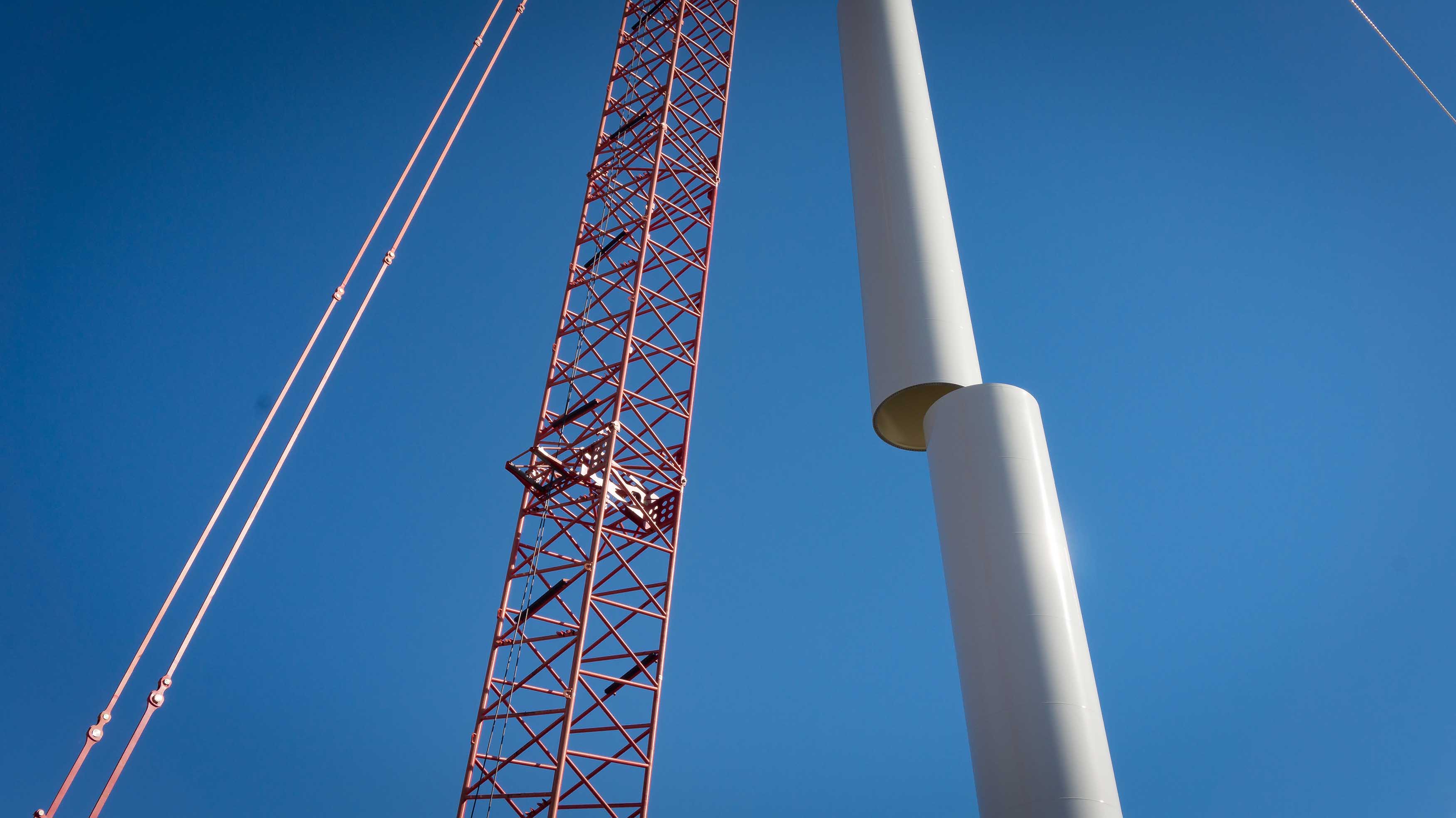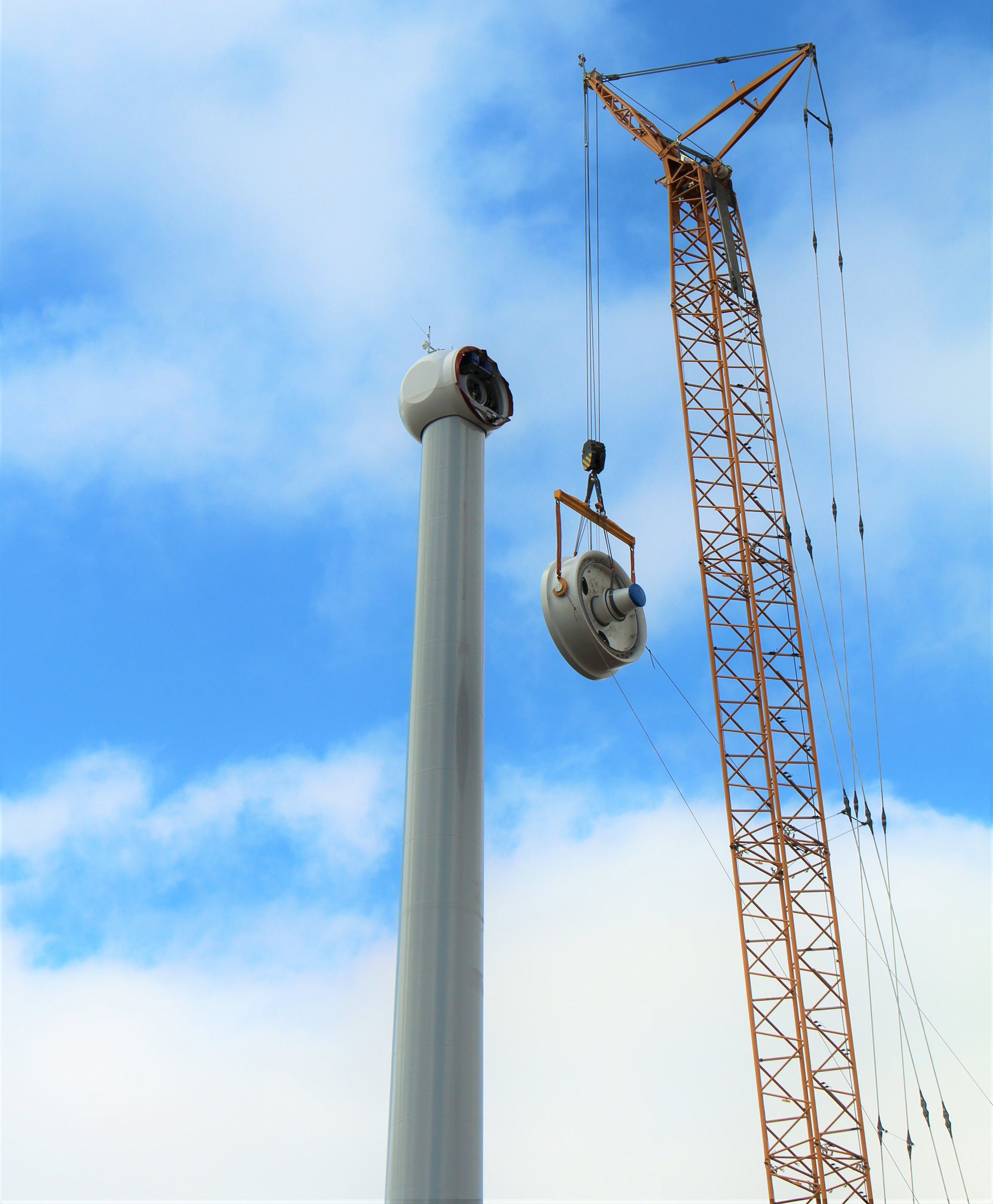SITE PATH
ONE ENERGY FEED

SUBSCRIBE
CONNECT WITH US
News Filters

PPE is essential at One Energy. As Procurement Manager, Kellie Suever ensures all employees are protected from head to toe.
In this edition of Safety Minute, Kellie walks us through some of the personal protective equipment (PPE) she supplies our teams with when they’re working in the field.
Learn about what she looks out for when ordering gear – from hard hats to steel toes – and how these seemingly minor details are a major necessity to keep our crews working safely and comfortably when building Wind for Industry projects.
Watch the video below, and be sure to subscribe to our YouTube channel so you don’t miss a minute.

I worked for one company who sent out employee cell phone bills every month and made us highlight any personal calls we made, so we could reimburse them. I worked for one company who would not let us have a single stamp to mail a personal letter. I worked for a company who made us cover the alcohol from every receipt on every expense report, no matter the quantity or purpose. I worked for a company who charged us to use the company printer.
As an employee, I didn’t get it. As an executive… I understand it even less!
There are three reality checks executives need:
- Employees will always win in the tit-for-tat game, if they want to.
- Your employees make far bigger decisions for the company than the cost of a stamp (or even a bottle of wine).
- Employees who know that you care for (and trust) them will return the favor tenfold.
It really is that straightforward.
From a pure capitalist point of view, the math is simple. If you make a $60,000/year employee track down their own 55-cent stamp, then you’re going to lose value from them. They are going to make time to mail that stamp, and that is time they could have spent doing better work for you. I would much rather my employee take 10 stamps and work an extra 5 minutes because they don’t have to leave early to make it to the post office. Hell, I don’t even want them thinking about the damn inconvenience of a stamp during the workday.
My job as an executive is to enable my employees to be as effective as possible for the company. My job is to remove unnecessary clutter so they can complete as much high-value work for me as possible.
Of course I want to be the kind of boss that I would want to work for. But, I also want to be the kind of executive that maximizes the value of his employees to the company. In this case, both qualities conveniently align.
Companies that nickel and dime employees over small stuff are sending the wrong message. They are not saying “respect the company’s resources,” as they purport. They are saying “$1 in cash to the company is worth more than $50 of your time.” Employees know the difference.
You trust your employees to do the big stuff. My team makes decisions about life-and-death engineering, complex accounting, and millions of dollars every day. If I need to demand that they pay me for the soda in the fridge, then I sure as hell shouldn’t be letting them make the bigger decisions that really matter for the company.
I have a duty to make their workday simple. I view it this way: a $75k/year employee costs $288 a day based on a 260-day work year (in my dreams). If I can spend $10 a day making them more productive, it will cost an extra $2,600 a year (a 3.4% burdened cost). If that employee is just 5% more efficient, the company made a killing.
The reality is that when you make it easy to work for you, employees are far greater than 5% more valuable (and productive). When they can grab a soda, mail an envelope, print their kid’s homework report, and have a glass of wine at dinner during a 3-hour layover in the Atlanta airport, without thinking about reimbursement, they know that you care about them. They know that you believe their time is valuable.
And when times get tough (and they will), and you’ve spent the last several years treating employees like humans and valuing their time, they’ll be there for you – even if you can no longer afford those little luxuries.
When things almost went off the cliff for us as a company last year, everyone that we asked to stay with us did (even when all logic said they shouldn’t). And when people asked me why they stayed with us, I told them: our employees know that I care about them, and in turn they care about this business. It is simple.
Jereme Kent is the CEO of One Energy.

Last week, One Energy partnered with Ohio Energy Project (link) for a virtual field trip (link) of the North Findlay Wind Campus. (More on that below!) During the event, we received a question from Emma, an energy-curious student in Ohio. We’re excited to use this week’s edition of Wind Views to address Emma’s question: “how much does a blade weigh?” Here’s the answer:
The blades used in our 1.5 MW wind turbines weigh more than 18,000 pounds each – that’s more than the weight of four average cars combined!
In this week’s Wind Views, you can see turbine blades being transported at One Energy’s component yard, located in Findlay, Ohio.


About the Virtual Field Trip:
One Energy was honored to host Ohio Energy Project for a virtual field trip – reporting live from the North Findlay Wind Campus.
Tour guide Erica, an engineer at One Energy, led participants through an educational tour of the One Energy office, turbine component yard, and inside a wind turbine itself! Viewers learned about the wind energy industry, discovered careers in wind, and had their questions answered – in real time – from a wind energy expert!
If you missed the live stream of our virtual field trip, a recording is available here.
Thanks to the teachers, students, classrooms, and all who participated and made the field trip such an engaging event! Thanks also to Ohio Energy Project and the team who helped make this digital visit as exciting as the real thing.

In December 2020, Ohio Energy Project and One Energy partnered for a virtual field trip inviting students, teachers, and classrooms from across the state to enjoy an up-close tour of the North Findlay Wind Campus.
The educational event was hosted by Monique Heath, Education Coordinator with Ohio Energy Project, with Erica Johnson, Field Engineer with One Energy serving as tour guide. Participants were taken on a tour of One Energy’s headquarters, explored large turbine parts in the company’s component yard, and even went inside a turbine that directly powers a nearby manufacturing facility!
Ohio Energy Project has shared a recording of the event on YouTube, which can be viewed below or by clicking here.
Ever wonder how wind turbine blades work, why turbines are painted light gray, or what the inside of a turbine looks like? We answer those questions (and many more) during the 45-minute field trip.
An added bonus? You’ll hear what it’s like to work in wind energy from past One Energy interns and current employees in engineering, procurement, and analyst roles!
Thanks to the teachers, students, classrooms, and all who participated and made the field trip such an engaging event!
Thanks also to Ohio Energy Project, and the team who helped make this digital visit as exciting as the real thing.

To solve today’s Wind Study, it may help to scroll down and take a look at last week’s Wind Energy Fact!
On Friday (December 4) we learned that when the North Findlay Wind Campus turbines are generating at full capacity, they complete 16 rotations per minute (RPM), which means the maximum tip speed is 163 mph. But what’s the tip speed of the blades when there are fewer rotations per minute?
Use the diagram, dimensions, and formula in today’s activity to calculate tip speed and rotor swept area , and check back Friday to see if you got it right!
Download today’s Wind Study homework question here, and be sure to share on Facebook and Twitter!


How fast can wind turbines spin? We get asked that a lot!
The maximum speed a turbine can spin – or more specifically, the maximum speed at the tip of spinning wind turbine blades – depends on the turbine. Wind turbine manufacturers provide all owners with information on how many rotations the rotor (three blades and a hub) on their specific turbine model can complete per minute, when generating at full capacity.
Our turbines at the North Findlay Wind Campus complete 16 rotations per minute at full capacity. And their maximum blade tip speed is 163 miles per hour!
At full capacity and maximum speed, these wind turbines are generating their highest amounts of electricity – and directly powering manufacturers in our communities!

Think that’s pretty cool? Share it on Facebook, LinkedIn, Instagram, and Twitter!

Wind Study answer time! On Monday, we asked you to calculate the radius for a crane lift, and whether it would be considered a “critical pick” during wind turbine construction.
With components weighing hundreds of thousands of pounds, these details are crucial for the One Energy team and our crane operators to know. Think you know the answers? Find out below! (If you haven’t read Monday’s question yet, click here.)
The answers to these questions can be downloaded via the link below.
Download this week’s Wind Study Homework Answer
Below, a different view of a crane lifting a wind turbine generator during construction of a One Energy Wind for Industry project. (Look closely – can you see the wind energy technician inside the nacelle, ready to receive the component? Don’t worry – they’re harnessed in safely!)

Check back on Monday for a new Wind Study question, which will be posted to our Facebook and Twitter accounts as well!

What’s the difference between an economist and an accountant? The economist didn’t have enough personality to be an accountant.
Of course, this joke is funny because everyone knows that accounting is boring and thus, accountants are, too…right? Therefore, economists must be even worse!
Really, I just think the accounting industry has a branding issue. Why not call ourselves Scorekeepers? It would certainly make us sound more interesting. And in the end, keeping score is really what we’re doing. Capturing lots of data, nearly all in dollars, and spitting it out in some form of useful information that tells you something about your business. How much does it cost us to add a truck to our fleet of vehicles? How much should we charge for this new product? If we hire five new employees, what will that cost us “all in” (including all the benefits and taxes)? And the ever popular, “Did we make any money?”
The “art” of accounting, however, isn’t about answering those questions. It’s about presenting information in a way that is understandable, meaningful, useful, and valuable. Doing that requires a genuine understanding of your audience and a real appreciation for the fact that different audiences need different information presented in different ways. Different people in different positions will find different sets of information useful. The art of accounting is meeting the needs of your different audiences so that they, in turn, can make critical decisions that propel your organization forward. It’s the difference between reading the black and white box score in the sports section of the newspaper (boring!) and listening to a talented announcer describe the last play of the game as one team comes from behind to score in the last few seconds, pulling out an unbelievable win!
Accounting isn’t sexy. Well, not to most people. (Okay, honestly, not even to me.) But try thinking about any professional sporting event without the questions, “what’s the score?” or “who won?” crossing your mind. It’s like touching your nose with your elbow – you just can’t do it! (You can put your elbow down now.)
If you try thinking about financial statements or reports like a scorecard, perhaps they will be more interesting and maybe even less daunting! And if you think you need different information, more understandable information, or you don’t know how the information you’re getting applies to your job, then it’s probably time to have a conversation with your accountant. A good accountant will want to get you what you need, and a great accountant will find a way to make it interesting for you! I mean, we’re not economists, after all.
Anne Bain is the Head of Accounting at One Energy.

Today’s Wind View shows two wind turbine tower sections being stacked during construction. Once all four sections have been stacked, the tower will be roughly 265 ft. tall and ready to be topped with the nacelle!
Visit page 4.1 Energy Terminology to learn more about these turbine components (towers, nacelles, and much more!).


Happy Monday! In this week’s Wind Study we’re talking tables, metrics, and cranes capable of lifting hundreds of thousands of pounds!
To construct wind turbines, One Energy uses a crane to lift and install components, such as the generator pictured below (which weighs 101,200 pounds). For this week’s Wind Study, learn about “critical picks”, how to read tables and crane load charts, and help us answer two math problems about lifting components with a crane.
Download this week’s Wind Study Homework Question (and check back Friday for the answer!) This question can also be found on our Facebook and Twitter accounts.




